SR Suntour Durolux 29 (2018-2019) Fork
(discontinued)
| Where To Buy | |||
|---|---|---|---|
Free shipping on orders over $50 (continental U.S. only).
International shipping available. Some exclusions apply. |
|||
Free shipping on orders over $50 (continental U.S. only).
International shipping available. Some exclusions apply. |
|||

According to basic economic theory, competition in a marketplace is a good thing. As more of a certain type of product comes to market, performance should improve and/or pricing should fall. Does the latest version of the SR Suntour Durolux fit this mold by offering top rung performance at a lower price point? We spent the better part of a summer trying to answer this question.
With roots dating clear back to 1912, SR Suntour is not a new company. From the invention of the slant-parallelogram derailleur in 1964 to today, they now hold a formidable post as a major suspension manufacturer and OEM supplier to more budget-friendly bicycles. They are also one of the few bicycle manufacturing companies who can take in raw goods and output a working product with next to no outsourcing.
Knowing what they could produce, the company took aim at the higher-end market with the launch of new Durolux and RUX fork models a few years back. The longer-travel RUX is frequently seen in the mix on the World Cup downhill scene being piloted by the UR Polygon team, and even holds a win at the 2017 round in Lourdes. According to SR Suntour, though a bigger fork, the Durolux and RUX are very similar from a functional standpoint. Let's take a look...

Strengths
- Excellent chassis stiffness and steering precision
- Easy to get that ultra-smooth feel by using the air bleed/lubrication holes
- Simple to service
- Lots of damper adjustments
- Quick bottom-out adjustment using air volume spacers
- Can change travel without buying a new air piston
- Integrated mud fender
- Low price point compared to much of the competition
Weaknesses
- Loud damper sounds
- Heavy weight
- Tall axle-to-crown height
- Narrow damping adjustment range
- Less precise coil negative spring
SR Suntour Durolux 29 Highlights
- 29-inch and 27.5+ wheel compatibility
- 150, 160, or 170mm travel (internally adjustable)
- Black 36mm 7000 series alloy stanchions
- Air sprung with air volume adjustment system and two-step coil negative spring
- R2C2 model: External high and low-speed rebound, high and low-speed compression adjustments
- RC2 model: External low-speed rebound, high and low-speed compression adjustments
- Fully sealed cartridge damper with Piston Compensator System (PCS)
- 589mm axle-to-crown measurement at 170mm travel
- 51mm offset
- Air bleed/lubrication holes
- Quick Service Product (QSP)
- Hollow forged crown
- Magnesium lowers
- Boost 15x110mm Q-LOC2 axle
- 180mm post brake mount
- Tapered 7000 series alloy steerer
- Integrated/removable mud fender
- Weight:2,255g (5.0-pounds)
- MSRP: $800 USD for R2C2 model, $700 for RC2 model
We reviewed the 27.5-inch version of the Durolux previously with favorable marks. The new 29-inch model is similar to that fork in a number of ways, with the latest iteration representing more of a revision than a revolution for the brand. Changes are straightforward: A new chassis to accommodate Boost spacing (versus a 20mm axle) and 29/27.5+ wheels, as well as a few minor changes to the air spring and damper.
As shown in the video review below, the fork utilizes a cartridge damper system with an IFP (internal floating piston) as opposed to an expanding bladder like those found on certain FOX and RockShox models. When the fork is cycled and fluid is displaced, pressure pushes on the IFP and expands the chamber to make room for the displaced fluid. SR Suntour utilizes a very light spring on the backside of the IFP to keep things moving freely. One upside to the PCS (Piston Compensator System), as SR Suntour refers to it, is that it's easier to service. No proprietary tools are required to bleed air from the cartridge.
Turning to the the spring side, the fork is air sprung with a two-step coil negative spring. Downsides to the coil negative are that it's a bit heavier and a static spring rate doesn't automatically adjust based on the amount of air in the positive chamber. The upside to this system is simplicity. Fortunately, SR Suntour offers three negative springs, including a soft for riders under 145-pounds, a heavy for riders over 210-pounds, and a medium (tested) for those in between. For those wondering, these negative springs will reduce travel if too heavy of a rate is used outside of its intended range.
The air spring curve is adjustable using spacers to add bottom-out support, much like other forks on the market. It's also possible to change the travel of the fork without buying a new air piston, though this job does require a very straightforward 10-minute teardown.
Unlike most of the competition, SR Suntour provides service ports on the back of the fork. This makes adding a fresh coat of oil to the seals or burping the lowers a breeze.
Unlike most of the competition, SR Suntour provides service ports on the back of the fork. This makes adding a fresh coat of oil to the seals or burping the lowers a breeze. SR Suntour suggests 1cc per side when using the service ports with a max of 5cc in the damper side and 10cc in the spring side. They do suggest fully servicing the fork’s lowers every 50 hours of riding, but for the racer out there it’s pretty slick to be able to make your fork extra buttery right before a race run without dropping the lowers.
Interestingly, SR Suntour ships the fork with only grease (no oil) around the seals. They claim oil attracts more dirt which actually increases service needs. To add, most oil just sits in the bottom of the lowers of the fork and nowhere near where it needs to be as most riders do not store their bikes upside down. Obviously they are okay with a rider adding oil, but they stress that "a clean fork is a happy fork."
To address some of the questions that are sure to arise, we’ll just answer them right out of the gate. No, the company does not plan on offering the fork with a coil spring. Yes, SR Suntour is kicking around the idea of "special edition" offsets, but this idea is still on the drawing board. Finally, though technically possible, the company does not suggest utilizing anything but 5-weight oil in the damper.

Initial Impressions
From the moment you pick up the Durolux, it's clear the fork means business. This may very well be the burliest single crown going, though it's also among the heaviest.
"Looks like a Lyrik." Yeah, we know. Someone is going to say it, so we might as well just get that out of the way now. Considering all the major fork manufacturers are making their stuff in black we’ll just say "it looks like a suspension fork" instead.
The axle configuration is unique as well. There are no threads on the fork itself, but the 15mm axle has an expanding collet on the end. We had one early issue removing the axle as the collet kept expanding when backing it out, but once we played with it a bit we found the axle system quick, easy, and clever.

Besides its brawling stature, the other thing that struck us upon getting the fork on our bike was just how tall it seemed. The company pushed the axle-to-crown height an additional 10mm to accommodate an integrated fender. Though a nice touch, we weren't sure this was worth the additional height at first, especially set at 170mm of travel as we initially tested. While this may be overkill for most applications, we wanted to give it a try.
Besides its brawling stature, the other thing that struck us upon getting the fork on our bike was just how tall it seemed. The company pushed the axle-to-crown height an additional 10mm to accommodate an integrated fender.
Once we set appropriate sag and pulled 20mm of headset spacers to keep our bar height roughly the same as the 160mm fork it replaced, we weren’t overly bothered by the height. Yes, there were modest changes to the way the bike handled, but we quickly adapted within a few laps. Worth noting, the Santa Cruz Hightower LT this fork was tested on went from a 66.4-degree headtube to something closer to 65-degrees. The bottom bracket also grew about 12mm to 343mm, both within the range of acceptable these days. When dropping the fork down to 150mm, which we did later in the test, the bike returned to near-OEM angles but a fraction of a degree slacker and taller due to the additional 8mm.
On The Trail
On trail, the first thing we noted is how precise the chassis is. The Durolux has one of the stiffest chassis on the market, though it comes in a half-pound heavier than most of the competition. Second, the fork’s damping is quite a bit noisier than most of the other forks on the market. It's not a “bad” noise, like the thud of a chain against a frame, but if you are a part time ninja using your bike as a tool in your shadowy crafts, perhaps look elsewhere as your enemy is more likely to hear you coming.

At a rider weight of 200-pounds we ended up with a hair more than 90psi in the air spring with one volume spacer resulting in ~15% sag. Right out of the gate the fork’s action proved incredibly smooth, and perhaps a hair more coil-like (linear) than the competition. Though we have nothing objective to back this up, it felt as though the fork’s volume spacers were more impactful later in the fork’s stroke than a RockShox Lyrik or FOX 36. Smooth as it may be, the fork does take marginally more force to initiate into its travel. By marginally we mean barely any more, and due to a coil negative spring the force required to initiate the fork into its travel is variable. Those running less pressure or a firmer negative spring will find breakaway force to be less than we did, and at no point did we find it off-the-back compared to the competition.
On trail, the first thing we noted is how precise the chassis is. Second, the fork’s damping is quite a bit noisier than most of the other forks on the market.
While the air spring was easy to get within an acceptable range, the damper setup took a bit more tinkering considering it has two high and two low-speed adjustments. Adjustments are awesome so long as the user can understand them and use them to find the perfect setup, but too many knobs can leave you feeling like a toddler in the cockpit of an airplane. A crash is likely to ensue… (what does THIS do?!)

Though SR Suntour started us off with some decent baseline settings, initially we were unable to get the damping to perform to our liking – especially in rough terrain where the front end felt skittish, lost grip in perilous situations, and was quickly overwhelmed. Thankfully SR Suntour knew the problem with our pre-production sample, citing that the rebound piston couldn't flow enough oil and the compression stack was a bit too firm. They revised this prior to releasing the fork, sending a production damper to test. Voila! All of our damper related problems were solved.
The company also sent out the more affordable RC2 damper, making this a unique review where we were able to essentially compare two forks at once. According to the company, the R2C2 damper is built for racers and riders looking for a firmer ride and the highest level of control over their damping. The RC2 damper, however, is designed around the rider looking for a more compliant ride with less adjustability. $100 separates the two forks, with the RC2 coming in at $700.
In the end both dampers proved excellent, but we preferred the RC2 version. It's a real diamond in the rough when it comes to dollar-for-dollar performance.
In the end both dampers proved excellent, but we preferred the RC2 version. It's a real diamond in the rough when it comes to dollar-for-dollar performance. The R2C2 at $800 is no slouch either, especially for those looking for a firmer ride. The FOX 36 with a GRIP damper edges both out when it comes to overall performance below $1,000, though it does have less adjustability than either SR Suntour fork.


The fork has a relatively narrow range of damper adjustment, which may leave some of them unused. The high-speed rebound often went untouched on the R2C2 fork and high-speed compression remained wide open on both forks. All the adjustability is awesome, but we didn’t find ourselves utilizing all the adjustments to the utmost degree.
Finally, despite having a wider fork selection readily available including a RockShox Lyrik and FOX 36, we can happily report that the Durolux stayed on our test bike without regret ever since making the damper swap. The ability to quickly lube the lowers is awesome and kept us riding more, wrenching less, and never thinking "Man, I wish I had a better fork on my bike." Yes, this SR Suntour fork can go toe to toe with anything out there.
Long Term Durability
Following a dusty summer and a wet fall full of rides, there have been no indications that durability will be a problem. The fork’s action has remained smooth and the crown is creak free.

What's The Bottom Line?
In both the RC2 and R2C2 configurations, the SR Suntour Durolux is a formidable competitor at a price hundreds less than much of the competition. The only real loser with the release of a fork like this is all the other manufacturers, as it has to be increasingly difficult to stay afloat in the performance suspension category. The 2018 Durolux deserves a hard look if you are in the market for a long-travel suspension fork, especially if you are a rider that prizes great steering precision, ease of service, and workhorse reliability.
Visit www.srsuntour-cycling.com for more details.
About The Reviewer
Jeff Brines - Age: 32 // Years Riding MTB: 18 // Height: 6'2" (1.88m) // Weight: 200-pounds (90.7kg)
Jeff didn't go on a real date until he was nearly 20 years old, largely as a result of his borderline unhealthy obsession with bicycles. Although his infatuation with two wheels may have lead to stuttering and sweatiness around the opposite sex, it did provide for an ideal environment to quickly progress through the ranks of both gravity and cross-country racing. These days, Jeff races enduro at the pro level, rides upward of 150 days a year while logging over 325k of human powered ascending/descending on his bike. Bred as a racer, Jeff is more likely to look for the fastest way through a section as opposed to the most playful. He lives in the shadow of the Tetons in Jackson, Wyoming.
Specifications
R2C2: High and Low Speed Compression, High and Low Speed Rebound
Magnesium lowers
Integrated mud fender
Two step coil negative spring
Air volume adjustment system
Air bleed/lubrication holes
Quick Service Product (QSP)
| Where To Buy | |||
|---|---|---|---|
Free shipping on orders over $50 (continental U.S. only).
International shipping available. Some exclusions apply. |
|||
Free shipping on orders over $50 (continental U.S. only).
International shipping available. Some exclusions apply. |
|||















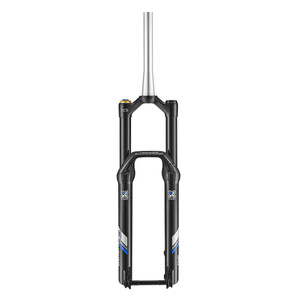
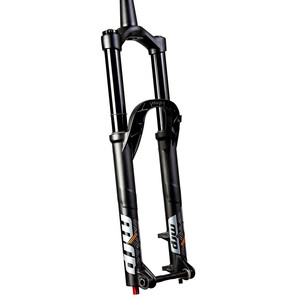
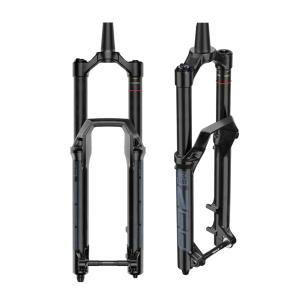

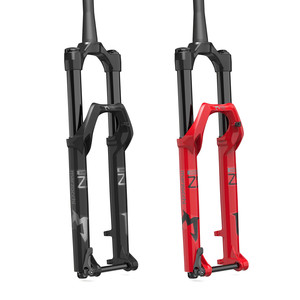
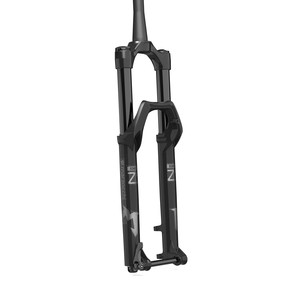
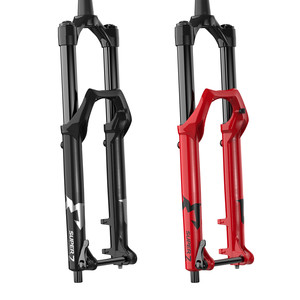






13 comments
Post a reply to: Tested: SR Suntour Durolux 29 R2C2 PCS Fork